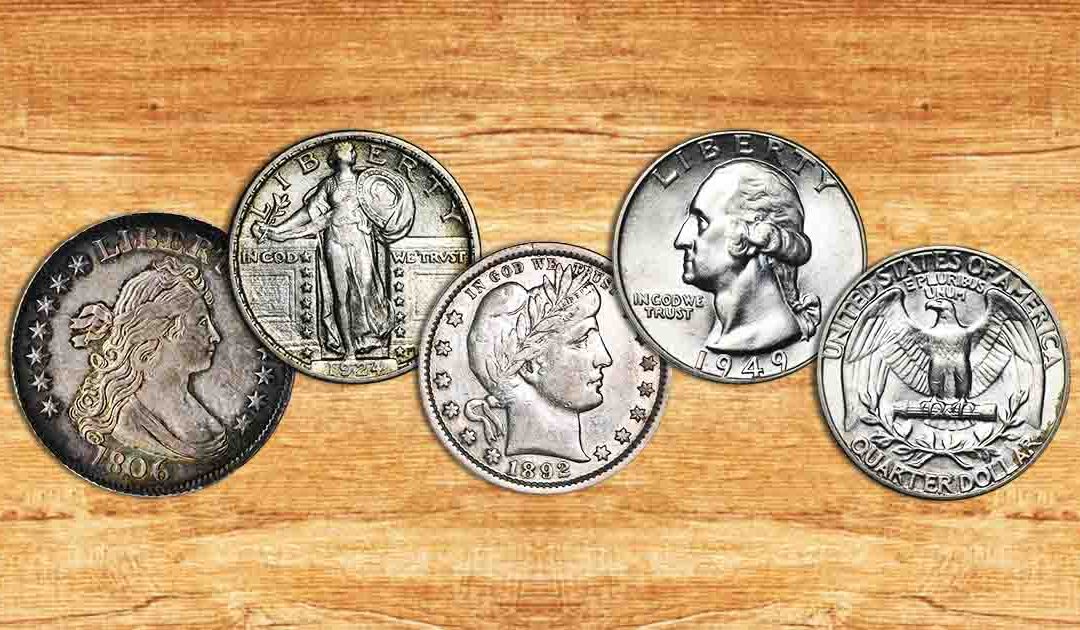If you’ve ever found an old quarter in your change, you might have asked: “How much silver is in a silver quarter?” The answer depends on the year and type of quarter you have.
Silver quarters are highly sought after by both coin collectors and precious metal investors. They’re small, recognizable, and packed with historical and monetary value. Let’s break down the silver content, history, and worth of these iconic U.S. coins.
What Is a Silver Quarter?
A silver quarter is any U.S. quarter minted before 1965 that contains 90% silver and 10% copper. Unlike today’s quarters, which are made of a copper-nickel clad composition, older quarters contain significant amounts of real silver.
The U.S. Mint transitioned away from silver due to rising metal costs in the 1960s. That’s why modern quarters are no longer made with silver, except for special proof and commemorative issues.
How Much Silver Is in a Silver Quarter?
The standard silver quarter (minted 1932–1964, Washington design) contains:
- Total Weight: 6.25 grams
- Silver Content: 90% (5.625 grams of silver)
- Actual Silver Weight (ASW): 0.18084 troy ounces of silver
This means each silver quarter contains just under one-fifth of a troy ounce of silver.
History of U.S. Silver Quarters
Different quarter designs contained silver before 1965. Each had the same 90% silver composition but featured unique designs:
Capped Bust Quarter (1796–1838)
- Early silver quarter design.
- All struck in 89–90% silver.
Seated Liberty Quarter (1838–1891)
- Featured Lady Liberty seated with a shield.
- Still 90% silver, 10% copper.
Barber Quarter (1892–1916)
- Designed by Charles Barber.
- Standard 90% silver composition.
Standing Liberty Quarter (1916–1930)
- Iconic design featuring Liberty with shield.
- Same silver content as Barber.
Washington Quarter (1932–1964)
- The most common silver quarter.
- Minted in 90% silver until 1964, then switched to copper-nickel.
Post-1964 Silver Quarters
After 1965, regular circulation quarters contained no silver. However, some special issues still include silver:
- Bicentennial Quarters (1976): 40% silver collector versions (not circulation).
- Silver Proof Quarters (1992–present): 90% silver, later changed to 99.9% silver.
Silver Value vs. Collectible Value
When asking how much silver is in a silver quarter, it’s important to distinguish between:
- Melt Value (Intrinsic Value): The value of silver in the coin, based on silver’s current price.
Example: If silver is $25/oz, a silver quarter’s melt value = $25 × 0.18084 ≈ $4.52.
- Numismatic Value (Collector Value): Rare dates, mint marks, and condition can make coins worth much more than their silver content.
Example: A 1932-D Washington quarter in mint condition can fetch hundreds or even thousands of dollars.
How to Calculate Silver Value in Quarters
To calculate melt value:
Formula:Weight in troy ounces × silver spot price = melt value
- Silver quarter = 0.18084 troy oz × silver spot price
- Example at $30/oz → 0.18084 × 30 = $5.42 per quarter
A roll of 40 silver quarters = about 7.23 troy ounces of silver.
Rare Silver Quarters Worth More
Not all silver quarters are equal. Some carry huge premiums due to rarity:
- 1932-D Washington Quarter – Scarce first-year issue.
- 1932-S Washington Quarter – Another low-mintage rarity.
- Standing Liberty Quarters (1920s in MS condition) – Highly collectible.
- Error Coins – Off-center strikes, double dies, and other mint errors can be worth hundreds.
Investing in Silver Quarters
Silver quarters are popular for investment because:
- They are small and divisible.
- Recognizable U.S. coinage makes them easy to trade.
- They hedge against inflation.
- Often available in junk silver bags (bulk circulated silver coins).
Investors typically buy silver quarters in bulk, valuing them primarily for their silver content rather than rarity.
How to Tell If Your Quarter Is Silver
To identify a silver quarter:
- Check the Date – Quarters dated 1964 or earlier are 90% silver.
- Look at the Edge – Modern quarters have a copper-colored stripe; silver quarters do not.
- Weight Test – Silver quarters weigh 6.25 grams; clad quarters weigh 5.67 grams.
- Sound Test – Silver coins make a distinctive, high-pitched “ring” when tapped.
Where to Buy and Sell Silver Quarters
- Coin Dealers: Reliable for both buying and selling.
- Bullion Shops: Sell junk silver bags by face value weight.
- Online Marketplaces: eBay, Heritage Auctions, etc.
- U.S. Mint: Only sells modern silver proof quarters.
Caring for Silver Quarters
- Avoid polishing—cleaning can damage collector value.
- Store in airtight holders to prevent tarnish.
- Keep away from humidity and acidic paper.
Conclusion
The answer: A standard silver quarter contains 0.18084 troy ounces of silver, or about 5.625 grams.
That means:
- At $25/oz, each quarter is worth about $4.50 in silver.
- A roll of 40 is worth over $180 in silver alone.
But beyond melt value, collectible silver quarters—especially rare dates, mint marks, and error coins—can be worth far more.
Whether you’re a collector or investor, silver quarters remain one of the most affordable and accessible ways to own silver while also holding a piece of American history.
FAQs
1. How much silver is in a silver quarter?
Each pre-1965 quarter contains 90% silver, equal to 0.18084 troy ounces (about 5.6 grams).
2. Which quarters are 100% silver?
None—U.S. silver quarters were always 90% silver and 10% copper for durability.
3. How can I tell if my quarter is silver?
Check the date (1964 or earlier) and look for the absence of a copper stripe on the coin’s edge.
4. What is the melt value of a silver quarter today?
It depends on silver’s price. At $25/oz, a silver quarter’s melt value is about $4.50.
5. Are silver quarters a good investment?
Yes—they’re small, easy to trade, and backed by both historical and silver bullion value.

